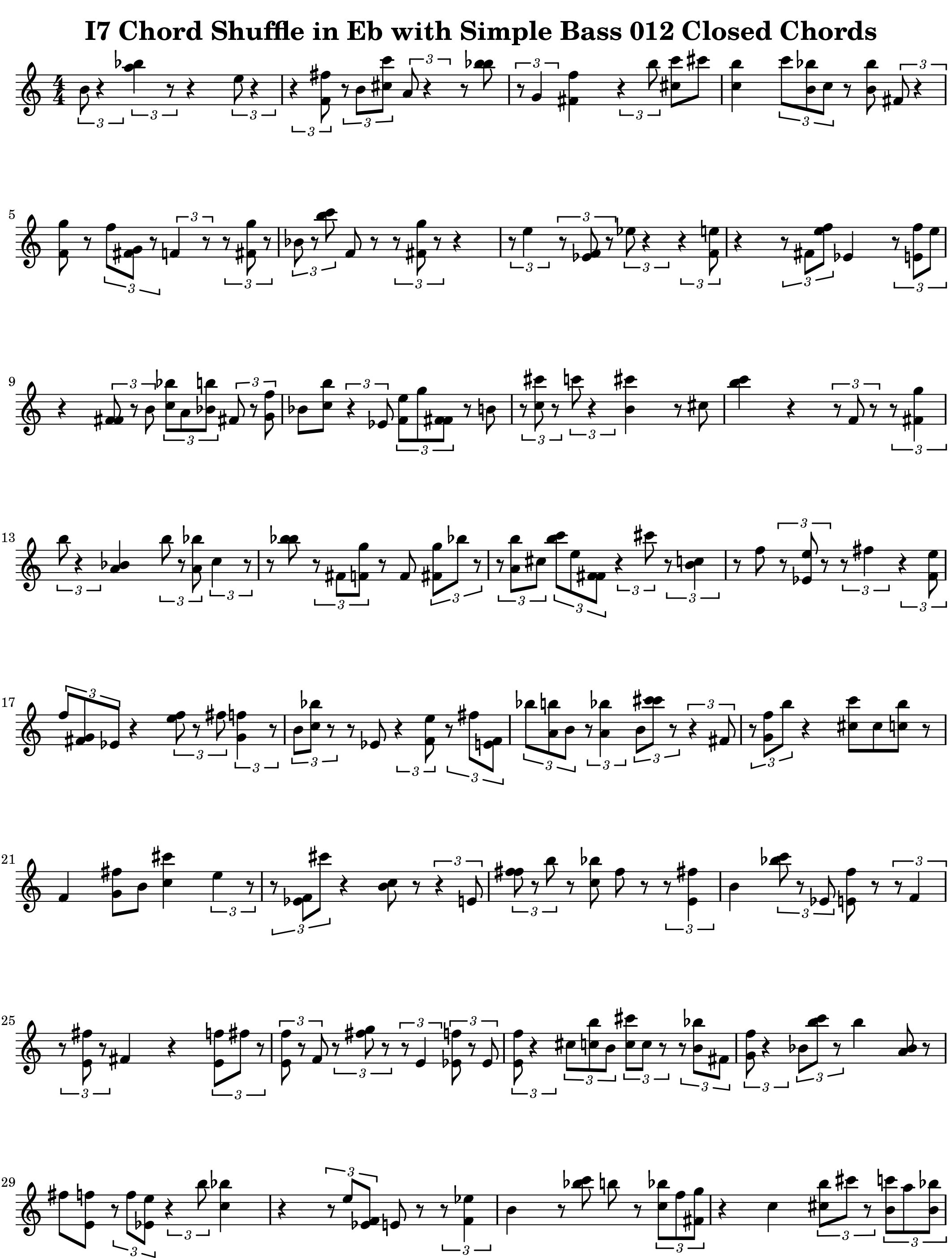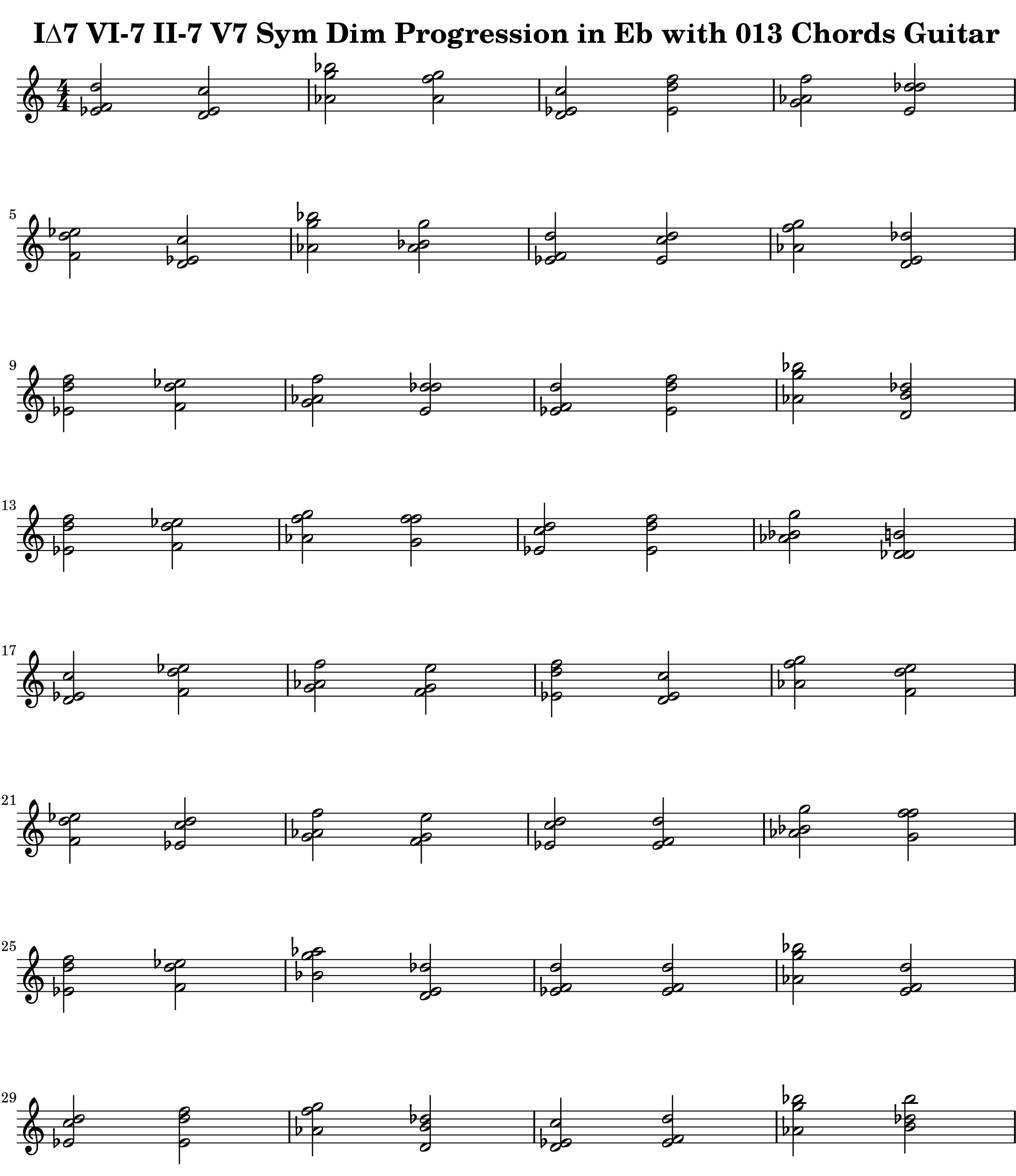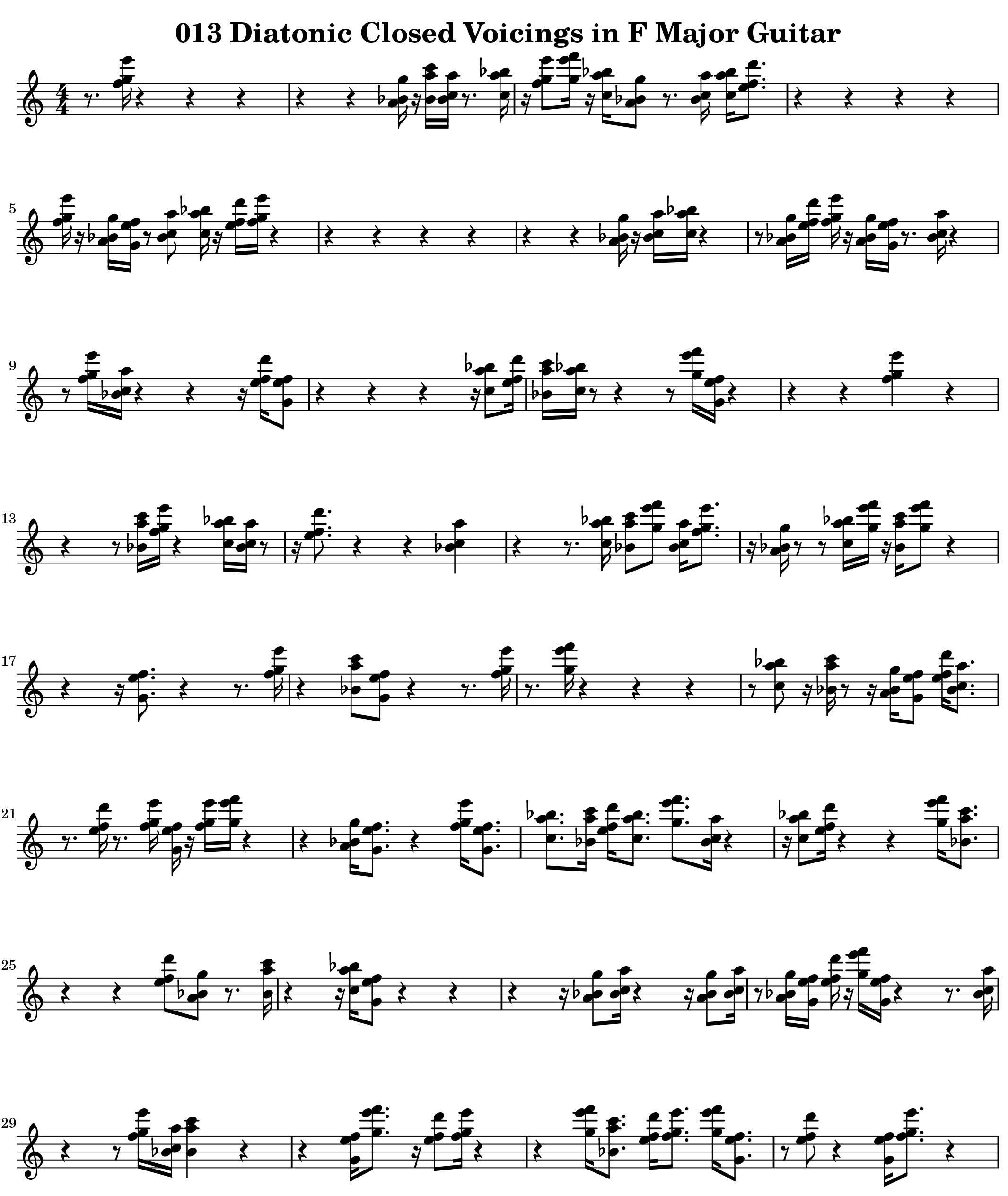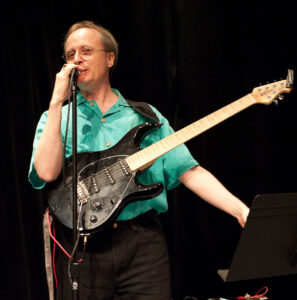Ultimate 3 Note Chord Lexicon by Bruce Arnold
Ultimate 3 Note Chord Lexicon covers 3 note chords based on pitch class sets. Typically chord books cover chords build in 3rds. For the first time available anywhere the Ultimate 3 Note Chord Lexicon books explore the other 11 ways that chords can be built revealing a whole new world of sound! Ultimately there will be 12 volumes covering each of 3 note chord possibilities. In addition to études, which help you hear how these structures sound over various harmonic situations there are chord voicing for both piano and guitar.
Bruce Arnold states that the “Ultimate 3 Note Chord Lexicon” also gives you a crucial information on how you can understand and apply each 3 note chord. It is interesting to note that as you build chords with smaller structures there are more places that these chords can be used as substitutions. This makes these chords especially useful because they can be used in so many more situations that larger chord voicings. A chart is included in each book showing you all the practical ways that each 3 note structure can be used as well as examples in the études.
Please Note: If you are a guitarist we highly recommend that you also work with the Guitar Technique and Physiology Course so that you develop the proper technique when working on any of the concepts found in the”Ultimate 3 Note Chord Lexicon.
Ultimate 3 Note Chord Lexicon Individual Courses
If you prefer to order single books in this series you will find information on each below:
Ultimate 3 Note Chord Lexicon Volume One “012” by Bruce Arnold
Example of the études found in Volume One
Each group of études found in this book applies the pitch class set “012” chord to different styles of music or uses “012” is different ways. All études include 3 different tempos to help a student slowly master each exercise. You will find that the faster you play “012s” the more musical they sound so expect a period of development before this combination is fluent.
Most of the études include addition rhythm section MP3 which can be used to create you own improvisation or used with the
“Ultimate Arpeggio” book to play the études found in that study. Overall the best idea to practice the use of “012s” is to:
- Learn the chord voicings for either piano or guitar by playing them cycle 5.
- If you are a composer write short études uses the “012.”
- Learn how to play the études by first starting slow and then increasing the tempo each day.
- Just listen to the études to get the sound of the 3 note grouping into your ear.
- Sight sing through the études by arpeggiating the chord voicings or singing the bass lines. Many times students may need to use the MetroDrone to help them maintain the key center.
Below are four examples from the “Ultimate 3 Note Chord Lexicon Volume 1: “012.”
- Click on triangle to see the pitch class set “012” étude with chords on beats 1 and 3:
-
- The page below shows you an an étude where the pitch class set “012” voicings are substituted over a common chord progression. In this case it is a I7 to bIII7 to II7 to bII7. There is a two measure count off which gives you the key center in half notes. For any dominant chord there are 6 possible “012s” that can used as a substitute. You can find out more about this in the book.

- There are 3 MP3s for each étude each gets progressively faster. Since these études make more musical sense when play at a faster tempo the MP3s below start with the fastest MP3 and then get slower. Keep in mind that there are also midifiles for each example so you can play any exercise at any tempo.
- Level 2 MP3 for example above with 2 measure count-off which also creates the key center.
- Level 1 for example above with 2 measure count-off which also creates the key center.
- You can use these études for ear training, sight reading, transcription or just to listen to ingrain the sound of the note in the key center. Remember you can play these examples at any tempo… Super slow or extremely fast with the midifiles that accompany this course. Bass charts are also included for all exercises except this example.
- Click on triangle to see the “012” étude in a Funk style:
- There are 3 MP3s for each étude each gets progressively faster. Since these études make more musical sense when play at a faster tempo the MP3s below start with the fastest MP3 and then get slower. Keep in mind that there are also midifiles for each example so you can play any exercise at any tempo.
- Level 2 MP3 for example above with 2 measure count-off on beats 1 and 3 which also creates the key center.
- Level 1 for example above with 2 measure count-off on beats 1 and 3 which also creates the key center.
- You can use these études for ear training, sight reading, transcription or just to listen to ingrain the sound of the note in the key center. Remember you can play these examples at any tempo… Super slow or extremely fast with the midifiles that accompany this course.
- Click on triangle to see an étude in a Swing style:
- There are 3 MP3s for each étude each gets progressively faster. Since these études make more musical sense when play at a faster tempo the MP3s below start with the fastest MP3 and then get slower. Keep in mind that there are also midifiles for each example so you can play any exercise at any tempo.
- Level 2 MP3 for example above with 2 measure count-off which also creates the key center.
- Level 1 for example above with 2 measure count-off which also creates the key center.
- You can use these études for ear training, sight reading, transcription or just to listen to ingrain the sound of the note in the key center. Remember you can play these examples at any tempo… Super slow or extremely fast with the midifiles that accompany this course.
- Click on triangle to see an étude in a Shuffle style:
- There are 3 MP3s for each étude each gets progressively faster. Since these études make more musical sense when play at a faster tempo the MP3s below start with the fastest MP3 and then get slower. Keep in mind that there are also midi files for each example so you can play any exercise at any tempo.
- Level Two MP3 for example above with 2 measure count-off which also creates the key center.
- Level 1 for example above with 2 measure count-off which also creates the key center.
- You can use these études for ear training, sight reading, transcription or just to listen to ingrain the sound of the note in the key center. Remember you can play these examples at any tempo… Super slow or extremely fast with the midifiles that accompany this course.
Get Ultimate 3 Note Chord Lexicon Volume One “012” download today!
ISBN: 978-1-59489-531-9
131 Page PDF, 792 MP3s and 108 Midi files plus bass clef part for each exercise.
Status: In stock, Digital book is available for immediate access.
Ultimate 3 Note Chord Lexicon Volume Two “013” by Bruce Arnold
Volume Two in this series is a MUST OWN course.
The pitch class set “013s” are some of the most beautiful and useful sounds in music. It is also the most versatile chord of the 12 different chord types. Recent research proves that “013” was used extensively by John Coltrane in his late recordings. Proving once again that “013” is a must learn pitch class set because of the great diversity in its application. Below is a quick list of some benefits:
- The pitch class set “013” can be used as a replacement for any chord type.
- The pitch class set “013” is an easy chord to play on both the guitar and the piano.
- The pitch class set “013” can create both a consonant or dissonant sound depending on how it is voiced.
- There is a large quantity of songs and compositions that have a preponderance of the pitch class set “013s” in their melody
- Scales such as the Modes of Major, Melodic Minor Ascending, Harmonic Minor and Diminished all have two discreet “013s” in their scale so it can easily be substituted for these sounds.
Example of the études found in Volume Two
There are seven sets of études in this course and each applies an “013” chord to different type of musical situation. All études include 3 different tempos to help a student slowly master each exercise. “013s” are beautiful sounding at any tempo so the learning curve is not as steep and you can start using them in your playing quickly. “013s” are excellent for replacing the tired chords you play. They are also create a great sound when used in a modal situation.
Most of the études include addition rhythm section MP3 which can be used to create you own improvisation or used with the
“Ultimate Arpeggio” book to play the études found in that study. Overall the best idea to practice the use of “013s” is to:
- Learn the chord voicings for either piano or guitar by playing them cycle 5.
- If you are a composer write short études uses the pitch class set “013.”
- Learn how to play the études by first starting slow and then increasing the tempo each day.
- Just listen to the études to get the sound of the 3 note grouping into your ear.
- Sight sing through the études by arpeggiating the chord voicings or singing the bass lines. Many times students may need to use the MetroDrone to help them maintain the key center.
Below are four examples from the “Ultimate 3 Note Chord Lexicon Volume 2: “013.”
- Click on triangle to see the “013” étude over the turnaround I, vi, ii, V:
- There are 3 MP3s for each étude each gets progressively faster. Since these études make more musical sense when play at a faster tempo the MP3s below start with the fastest MP3 and then get slower. Keep in mind that there are also midifiles for each example so you can play any exercise at any tempo.
- Level 2 MP3 for example above with 2 measure count-off on beats 1 and 3 which also creates the key center.
- Level 1 for example above with 2 measure count-off on beats 1 and 3 which also creates the key center.
- You can use these études for ear training, sight reading, transcription or just to listen to ingrain the sound of the note in the key center. Remember you can play these examples at any tempo… Super slow or extremely fast with the midifiles that accompany this course.
- Click on triangle to see an étude where the “013s” replacement the typical I, vi, ii, V but the V7 chord uses Symmetrical Diminished based harmony. Charts for the bass line are included as well as a piano part transposed down an octave:
- There are 3 MP3s for each étude each gets progressively faster. Since these études make more musical sense when play at a faster tempo the MP3s below start with the fastest MP3 and then get slower. Keep in mind that there are also midi files for each example so you can play any exercise at any tempo.
- Level 2 MP3 for example above with 2 measure count-off which also creates the key center.
- Level 1 for example above with 2 measure count-off which also creates the key center.
- You can use these études for ear training, sight reading, transcription or just to listen to ingrain the sound of the note in the key center. Remember you can play these examples at any tempo… Super slow or extremely fast with the midifiles that accompany this course.
- Click on triangle to see an étude using the Diatonic Chords of a Major Scale:
- There are 3 MP3s for each étude each gets progressively faster. Since these études make more musical sense when play at a faster tempo the MP3s below start with the fastest MP3 and then get slower. Keep in mind that there are also midifiles for each example so you can play any exercise at any tempo.
- Level Two MP3 for example above with 2 measure count-off which also creates the key center.
- Level 1 for example above with 2 measure count-off which also creates the key center.
- You can use these études for ear training, sight reading, transcription or just to listen to ingrain the sound of the note in the key center. Remember you can play these examples at any tempo… Super slow or extremely fast with the midifiles that accompany this course.
- Click on triangle to see the “013” étude playing diatonic Symmetrical Diminished chords over a dominant 7th:
-
- The page below shows you an an étude where the pitch class set “013” voicings are substituted dominant chord using “013” diatonic Symmetrical Diminished chords. There is a two measure count off which gives you the key center in half notes. For any dominant chord there are 6 possible “013s” that can used as a substitute. You can find out more about this in the book.
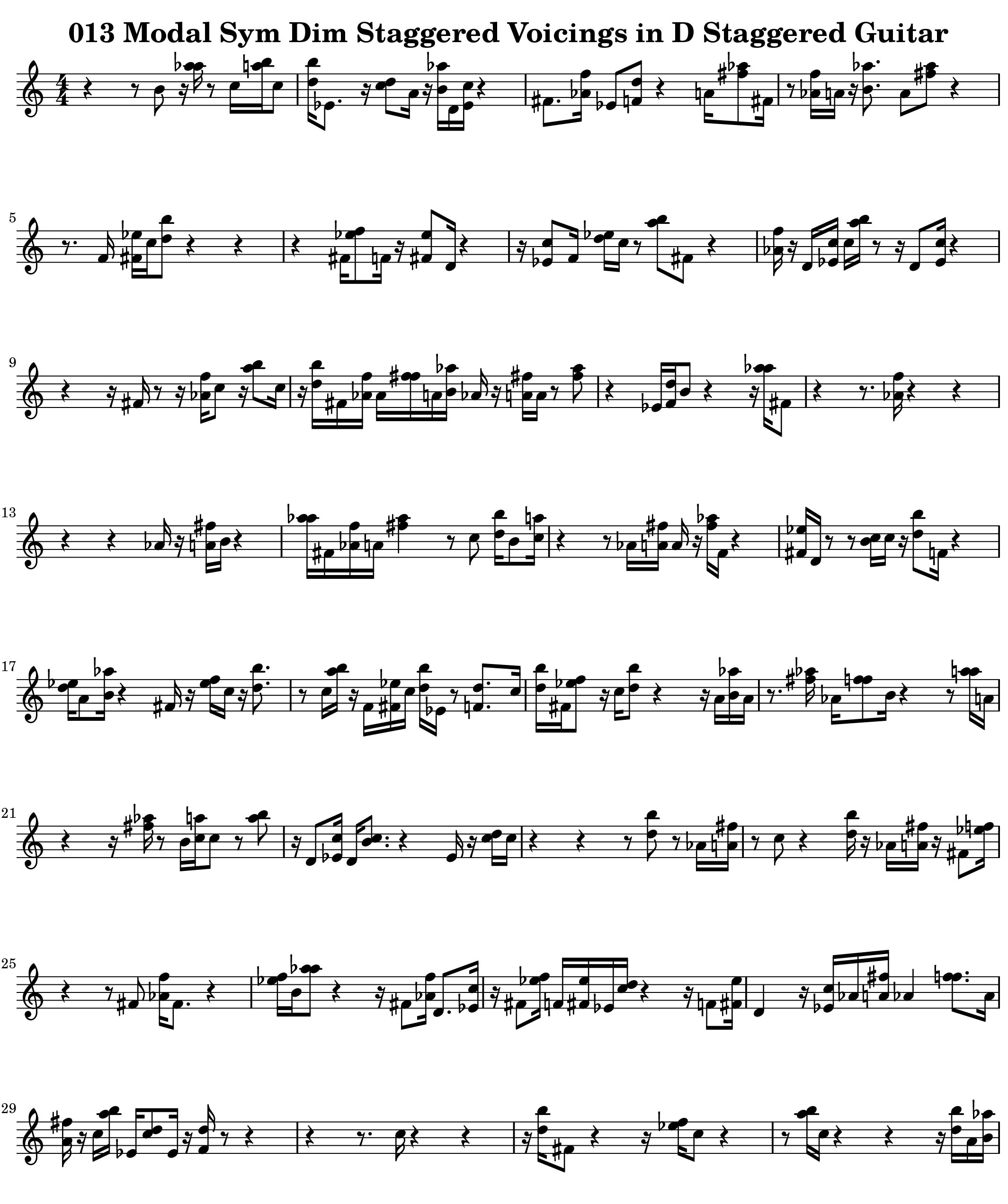
- There are 3 MP3s for each étude each gets progressively faster. Since these études make more musical sense when play at a faster tempo the MP3s below start with the fastest MP3 and then get slower. Keep in mind that there are also midifiles for each example so you can play any exercise at any tempo.
- Level 2 MP3 for example above with 2 measure count-off which also creates the key center.
- Level 1 for example above with 2 measure count-off which also creates the key center.
- You can use these études for ear training, sight reading, transcription or just to listen to ingrain the sound of the note in the key center. Remember you can play these examples at any tempo… Super slow or extremely fast with the midifiles that accompany this course. Bass charts are also included for all exercises except this example.
ISBN: 978-1-59489-532-6
119 Page PDF, 504 MP3s and 84 Midi files plus bass clef part for each exercise.
Status: In Stock, Digital book is available for immediate download.
Ultimate 3 Note Chord Lexicon Volume Three “014” by Bruce Arnold
Volume Three covers 014 chords which are distinctively evocative.
The pitch class set “014s” is mostly used as a substitute for a dominant 7th chord but can also be used as °7 or -Major7 chords. 014’s pair up as a hexatonic scale in many ways and this book covers them all. Below is a quick list of other benefits:
- The pitch class set “014” gives a sound reminiscent of Thelonious Monk!
- The pitch class set “014” is an easy chord to play on both the guitar and the piano.
- The pitch class set “014” creates a mostly dissonant sound so it is very useful when this type of sound is called for i.e. Jazz, Heavy Metal etc…
- There is a large quantity of songs and compositions that have a preponderance of “014s” in their melody. Most of the work Anton Webern employes an “014” pitch class set. Some other notable compositions are Mr. Arnold’s “Numbers” or Judi Silvano and Bruce Arnold’s haunting blues “Remembrances.”
- Scales such as the the highly used Symmetrical Diminished (1/2 step, whole step) have many discreet “014s” in its scale so it can easily be substituted for these sounds.
Example of the études found in Volume Three
There are five sets of études in this course and each applies an “014” chord to different types of musical situations. All études include 3 different tempos to help a student slowly master each exercise. “014s” are beautiful sounding at any tempo so the learning curve is not as steep and you can start using them in your playing quickly. “014s” are especially useful for replacing the tired dominant chord vocings that you play.
Most of the études include addition rhythm section MP3s which can be used to create you own improvisation or used with the
“Ultimate Arpeggio” book to play the études found in that study. Overall the best idea to practice the use of “014s” is to:
- Learn the chord voicings for either piano or guitar by playing them cycle 5.
- If you are a composer write short études uses the “014.”
- Learn how to play the études by first starting slow and then increasing the tempo each day.
- Just listen to the études to get the sound of the 3 note grouping into your ear.
- Sight sing through the études by arpeggiating the chord voicings or singing the bass lines. Many times students may need to use the MetroDrone to help them maintain the key center.
Below are four examples from the “Ultimate 3 Note Chord Lexicon Volume 3: “014.”
- Click on triangle to see the “014” étude over the turnaround I7, VI7, II7, V7:
- There are 3 MP3s for each étude each gets progressively faster. Since these études make more musical sense when play at a faster tempo the MP3s below start with the fastest MP3 and then get slower. Keep in mind that there are also midi Pitch Class Set Improvisation Seriesfiles for each example so you can play any exercise at any tempo.
- Level 2 MP3 for example above with 2 measure count-off on beats 1 and 3 which also creates the key center.
- Level 1 for example above with 2 measure count-off on beats 1 and 3 which also creates the key center.
- You can use these études for ear training, sight reading, transcription or just to listen to ingrain the sound of the note in the key center. Remember you can play these examples at any tempo… Super slow or extremely fast with the midi files that accompany this course.
- Click on triangle to see an étude where the “014s” replacement the chords for a Blues progression. Charts for the bass line are included as well as a piano part transposed down an octave:
- There are 3 MP3s for each étude each gets progressively faster. Since these études make more musical sense when play at a faster tempo the MP3s below start with the fastest MP3 and then get slower. Keep in mind that there are also midi files for each example so you can play any exercise at any tempo.
- Level 2 MP3 for example above with 2 measure count-off which also creates the key center.
- Level 1 for example above with 2 measure count-off which also creates the key center
- You can use these études for ear training, sight reading, transcription or just to listen to ingrain the sound of the note in the key center. Remember you can play these examples at any tempo… Super slow or extremely fast with the midi files that accompany this course.
- Click on triangle to see an étude where “014” replaces either a Diminished 7th or Minor Major 7th Chord:
- There are 3 MP3s for each étude each gets progressively faster. Since these études make more musical sense when play at a faster tempo the MP3s below start with the fastest MP3 and then get slower. Keep in mind that there are also midi files for each example so you can play any exercise at any tempo.
- Level Two MP3 for example above with 2 measure count-off which also creates the key center.
- Level 1 for example above with 2 measure count-off which also creates the key center.
- You can use these études for ear training, sight reading, transcription or just to listen to ingrain the sound of the note in the key center. Remember you can play these examples at any tempo… Super slow or extremely fast with the midifiles that accompany this course.
- Click on triangle to see the “014” étude playing “014” voicings derived from a Symmetrical Diminished scale over a dominant 7th:
-
- The page below shows you an an étude where “014” voicings derived from a Symmetrical Diminished scale over a dominant 7th. There is a two measure count off which gives you the key center in half notes. For any dominant chord there are many possible “014s” that can used as a substitute. You can find out more about this in the book.

- There are 3 MP3s for each étude each gets progressively faster. Since these études make more musical sense when play at a faster tempo the MP3s below start with the fastest MP3 and then get slower. Keep in mind that there are also midifiles for each example so you can play any exercise at any tempo.
- Level 2 MP3 for example above with 2 measure count-off which also creates the key center.
- Level 1 for example above with 2 measure count-off which also creates the key center.
- You can use these études for ear training, sight reading, transcription or just to listen to ingrain the sound of the note in the key center. Remember you can play these examples at any tempo… Super slow or extremely fast with the midifiles that accompany this course. Bass charts are also included for all exercises except this example.
ISBN: 978-1-59489-533-3
106 Page PDF, 360 MP3s and 60 Midfiles plus bass clef part for each exercise.
Status: In Stock, Digital book is available for immediate download.
Reviews
- What people are saying:
-
- I’ve been waiting for this series for a long time. I own Sonic Resource Guide, Ultimate Arpeggio and Tools for Modern Improvisation and find them fascinating. Glad I can now see a path to developing my own style with these chords. M. Anders
- I have the “012” book and find these structures very useful in free improvisation. Very dissonant structures excite me and as a guitarist seeing Mr. Arnold’s handpicked voicings saves me a lot of time.J. Nader
- I’m a jazz bassist and find the bass parts in these books to be a fantastic place to find new and interesting ways to compose bass lines. It is also great sight reading material!! H. Bain
- These books have brought me into a world that I didn’t even know existed. I love all the new sounds that these structure create. They are very easy to learn and because each chord can be used in so many ways its really expanding my playing ability quickly D. Kettler




